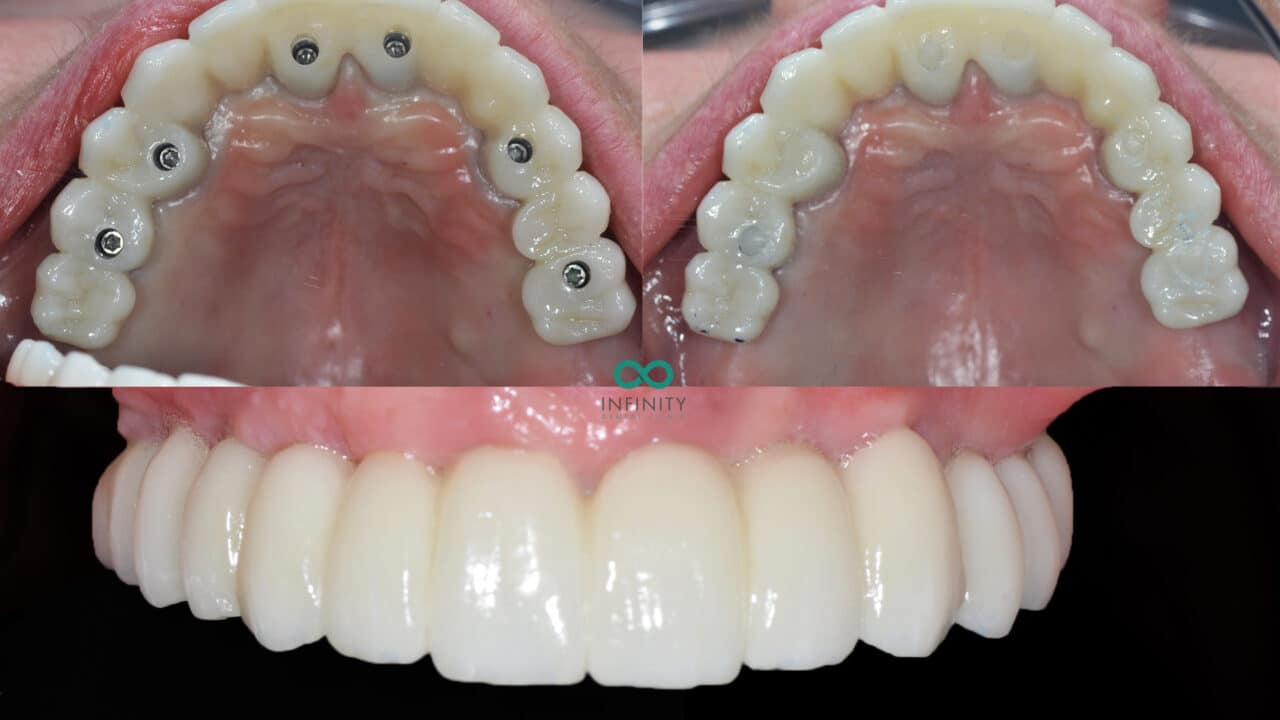Dental Sense - An Overview
Table of ContentsThe Greatest Guide To Dental SenseDental Sense Can Be Fun For AnyoneThe Ultimate Guide To Dental SenseIndicators on Dental Sense You Need To Know
are clinical devices operatively dental implanted right into the jaw to bring back an individual's capability to chew or their appearance. They offer support for synthetic (fake) teeth, such as crowns, bridges, or dentures. When a tooth is shed due to injury or disease, an individual can experience difficulties such as quick bone loss, malfunctioning speech, or changes to eating patterns that lead to pain.Oral implant systems include an oral implant body and oral implant abutment and might additionally include an abutment fixation screw. Professional teeth whitening. The dental implant body is operatively placed in the jawbone instead of the tooth's origin. The oral implant abutment is usually affixed to the dental implant body by the joint fixation screw and prolongs via gums into the mouth to support the affixed synthetic teeth
(https://www.kickstarter.com/profile/dentalsense1/about)Structure of The Dental Implant System selecting dental implants, speak with your dental copyright concerning the potential advantages and threats, and whether you are a prospect for the treatment. Points to take into consideration: Your total health is an essential consider establishing whether you are an excellent prospect for oral implants, the length of time it will certainly require to recover, and for how long the dental implant may remain in location.
Cigarette smoking might affect the healing procedure and lower the lasting success of the implant. The healing process for the dental implant body might take numerous months or longer, throughout which time you normally have a short-lived abutment instead of the tooth. the oral implant procedure: Thoroughly comply with the dental hygiene guidelines offered to you by your oral provider.
The Ultimate Guide To Dental Sense
Implant failing can cause the requirement for one more operation to deal with or replace the dental implant system. Recovers the capability to eat Brings back aesthetic appearance Assists keep the jawbone from reducing due to bone loss Maintains the health and wellness of the bordering bone and periodontals Assists maintain nearby (neighboring) teeth steady Improves top quality of life Damage to surrounding all-natural teeth during dental implant positioning Injury to the surrounding tissues during surgical procedure, such as sinus opening Injury during surgical treatment (for instance, fracture of bordering jawbone) Insufficient function, such as seeming like the teeth do not attack together usually A feeling that the tooth hangs or twisting in position arising from a joint screw loosening Implant body failure (looseness of the implant body) because of systemic infection, which may be more probable in patients with uncontrolled diabetics issues because of neighborhood infection in bone and gum tissues supporting the implant body due to delayed healing, which may be a lot more most likely in people that smoke Difficulty cleaning up the periodontals around the dental implant, resulting in poor oral health Neglected gum condition Post-surgical pins and needles as a result of nerve impingement or damage Constantly notify wellness treatment service providers and imaging service see this technicians that you have dental implants before any magnetic resonance imaging (MRI) or x-ray procedures.
FDA is not familiar with any damaging occasions reported for MRI or x-ray treatments with dental implants. Dental implants systems are usually made from materials that follow international agreement criteria of the International Company for Standardization (ISO) or ASTM International. These requirements have details of what makes a secure product.

An oral implant is a framework that changes a missing tooth. With screw-like devices, the surgeon inserts a dental implant into the jawbone, and it works as an anchor for an artificial tooth, called a crown. A gadget called a joint connects the fabricated tooth to the dental implant. The crown is tailor-made to fit the person's mouth and match the color of their teeth.
Facts About Dental Sense Revealed
Some people are not qualified for oral implant surgery. It is for dental cosmetic surgeons to operate on people with: severe illnessuncontrollable metabolic diseasebone or soft tissue disease or infectionIf these problems are settled, a person can have the surgical treatment. In, oral surgeons avoid operating on people with: If people with any of the above go through dental implant surgery, there is a higher risk of the implant failing.

Oral implant surgical treatment is an individualized procedure. It's not the exact same for everyone. However the complying with offers a general overview of what you can expect your dental expert, dental cosmetic surgeon, periodontist or prosthodontist to do: Put the dental implant operatively. Offer you time to recover. Attach the message and final crown, bridge or denture.
Next off, your surgeon will carefully place the dental implant into your jaw. Finally, your cosmetic surgeon will reposition your periodontals and close the cut with stitches. If your implant is near the front of your mouth, your dental professional will make a short-lived tooth for you to put on until you recover. In this way, you will not have a gap in your smile while you recover.
Getting My Dental Sense To Work
During the healing phase, your jawbone should fuse to the oral implant. This procedure can take anywhere from three to 9 months.
Once your implant heals, your dental practitioner can affix the abutment (little connector message) and your last remediation (crown, bridge or denture). This generally takes regarding one hour to finish and may call for a second minor surgical treatment. You shouldn't really feel any type of pain during your oral implant treatment because your company will certainly use medicine to numb your gum tissues.